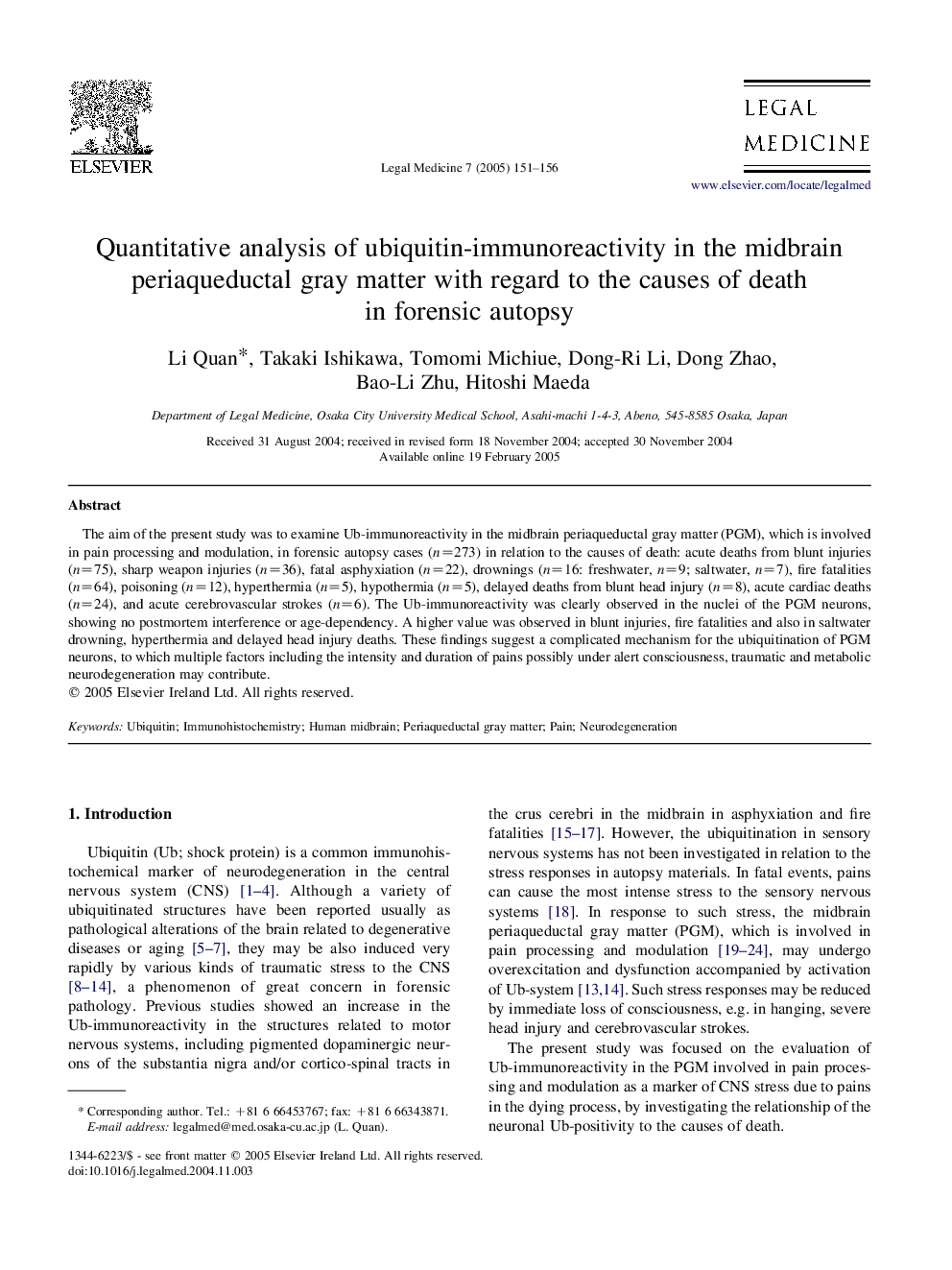| Article ID | Journal | Published Year | Pages | File Type |
|---|---|---|---|---|
| 10254882 | Legal Medicine | 2005 | 6 Pages |
Abstract
The aim of the present study was to examine Ub-immunoreactivity in the midbrain periaqueductal gray matter (PGM), which is involved in pain processing and modulation, in forensic autopsy cases (n=273) in relation to the causes of death: acute deaths from blunt injuries (n=75), sharp weapon injuries (n=36), fatal asphyxiation (n=22), drownings (n=16: freshwater, n=9; saltwater, n=7), fire fatalities (n=64), poisoning (n=12), hyperthermia (n=5), hypothermia (n=5), delayed deaths from blunt head injury (n=8), acute cardiac deaths (n=24), and acute cerebrovascular strokes (n=6). The Ub-immunoreactivity was clearly observed in the nuclei of the PGM neurons, showing no postmortem interference or age-dependency. A higher value was observed in blunt injuries, fire fatalities and also in saltwater drowning, hyperthermia and delayed head injury deaths. These findings suggest a complicated mechanism for the ubiquitination of PGM neurons, to which multiple factors including the intensity and duration of pains possibly under alert consciousness, traumatic and metabolic neurodegeneration may contribute.
Related Topics
Physical Sciences and Engineering
Chemistry
Analytical Chemistry
Authors
Li Quan, Takaki Ishikawa, Tomomi Michiue, Dong-Ri Li, Dong Zhao, Bao-Li Zhu, Hitoshi Maeda,
